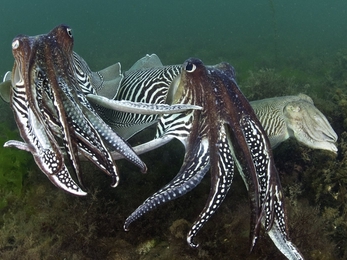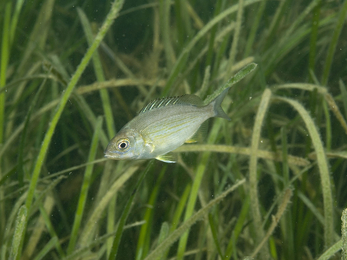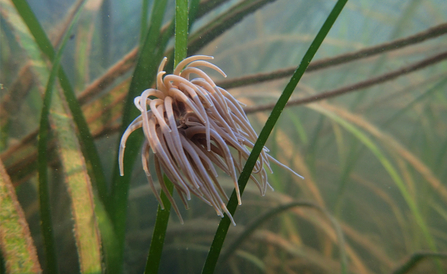Bring to mind the Solent and you may first think of sailboats, the Royal Navy, or its significance as a gateway for shipping and trade. But below the surface of this bustling waterway lies an equally busy world filled with wonders: the Solent’s internationally important seagrass meadows. Seagrass is the only marine flowering plant and supports rich biodiversity, including amazing species like seahorses, spider crabs and pipefish.
An important asset for local fisheries, seagrass meadows provide nursery and foraging areas for species like black seabream and sea bass, the latter of which spend up to seven years growing in the Solent and its estuaries before joining the adult population. Cuttlefish also visit the area every spring and summer to breed, attaching their dark black eggs, known as sea grapes, to the long leaves of the plants.
Seagrass meadows are an incredibly important asset in the fight against climate change – absorbing carbon dioxide in huge quantities and locking it away in the muds and sands they grow upon. They are one of the most efficient carbon-storing habitats on Earth, performing better than tropical rainforests. In fact, despite only covering about 0.1% of the seabed, seagrass meadows are responsible for sequestering up to 18% of all oceanic carbon.
If this wasn’t impressive enough, seagrass also improves water quality by absorbing excess nutrients from wastewater and provides natural coastal protection by dampening wave energy. A recent study has shown they may even help to remove plastic from our oceans, trapping small pieces of plastic litter in fibrous orbs, known as Neptune balls, which are later washed ashore.




